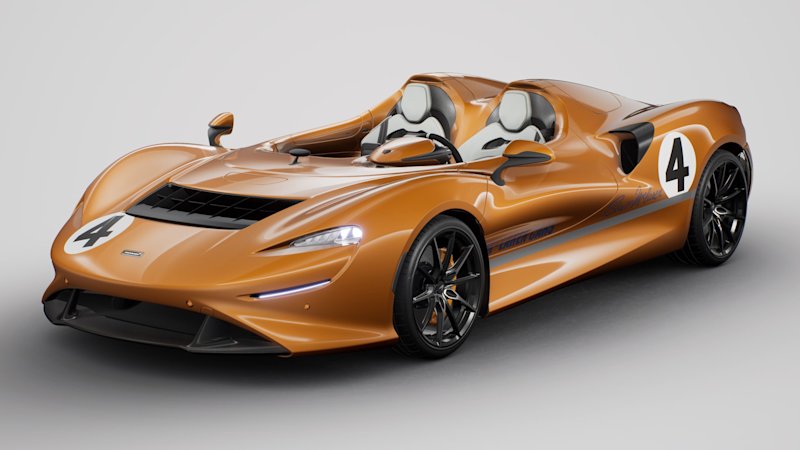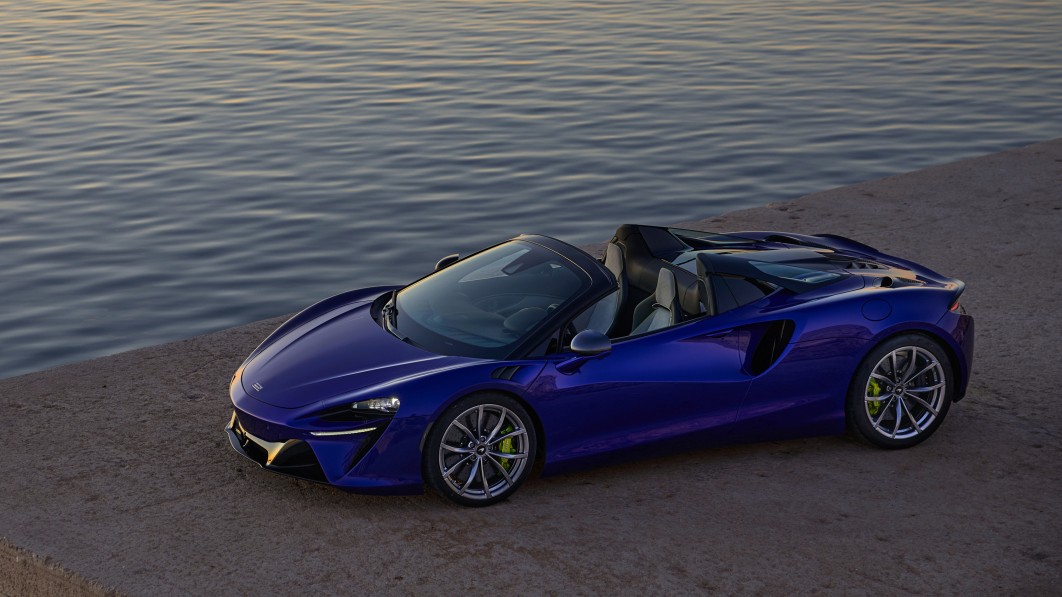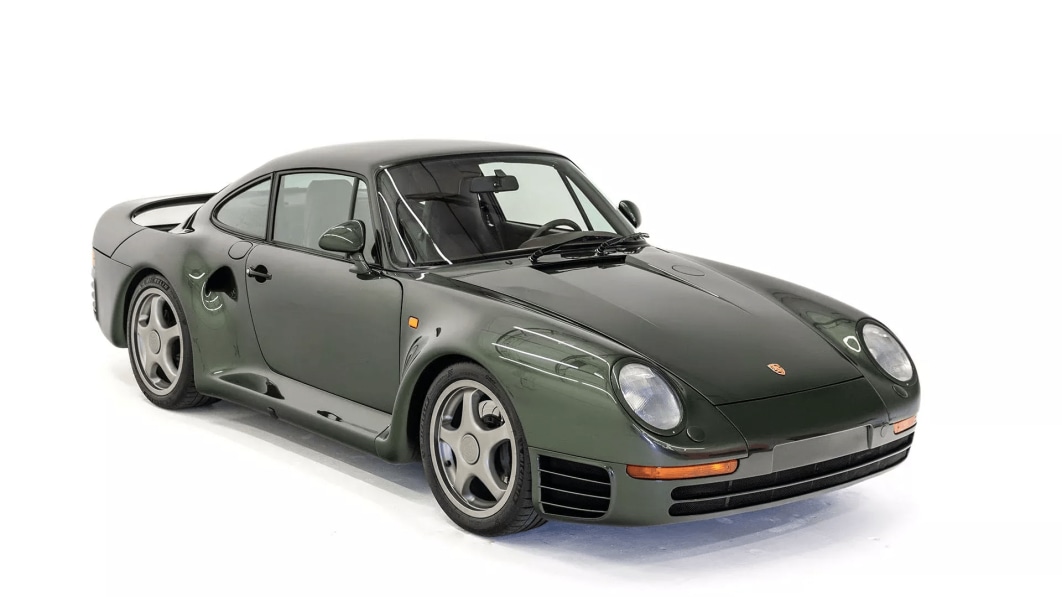You may have noticed that McLaren’s official brand color is a bright shade of orange. That dates back to Bruce McLaren’s M6A Can-Am race car of 1967, the first to feature the all-orange paint scheme and the car that helped him win his first Can-Am championship that year. So what better way to honor a wild open-top race car than by painting the wild open-top McLaren Elva supercar in the same color?
The McLaren Elva M6A Theme is the second race car-themed Elva to come from McLaren Special Operations (MSO). The group offers customization services to McLaren customers, particularly unique paint and carbon fiber finishes. The special was revealed on Twitter, and it is quite faithful to the 1967 car. It’s finished in a unique orange that looks a little less bold with more of a pearl finish than the glowing solid orange of the race car. It’s paired with big simple number circles featuring the number “4” like one of the race cars. On the sides, a metallic stripe is added to mimic the chrome divider between the top and bottom sections of the Can-Am car. It also gets the same “McLaren Cars” logo and Bruce McLaren’s signature down the side. As cool as this is from a historical standpoint, the orange really shows off how the body blends right into the interior, something McLaren did to evoke the feeling of being outside and exposed to the world, rather than hidden inside the car’s cabin. The dark launch color was far less effective at conveying that feeling.
[embedded content]As previously mentioned, MSO did another race car-themed Elva, a black and white car inspired by an older 1964 McLaren M1A race car. Clearly there will be one of each, but McLaren hasn’t put any limits on the designs, so it’s possible there may be multiple examples in the car’s 399-unit run. We also wouldn’t be surprised if McLaren rolls out some other motorsports-inspired liveries in the future, as it has many famous racecars to pull from. The reddish-orange and white Honda-powered Marlboro F1 cars of the late 1980s and the black and silver Mercedes-powered F1 cars of the early 2000s both seem like strong choices. Or if McLaren doesn’t do it themselves, maybe a rich reader could commission one painted as such. Though we wouldn’t want to tell that person how to spend their $1.69 million (or more) on their car.
Related Video:




